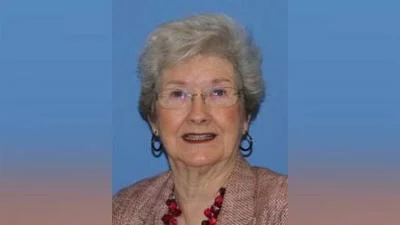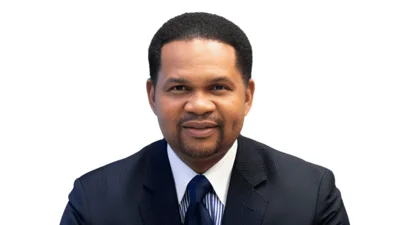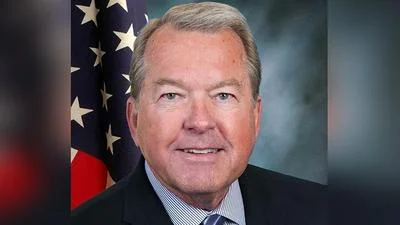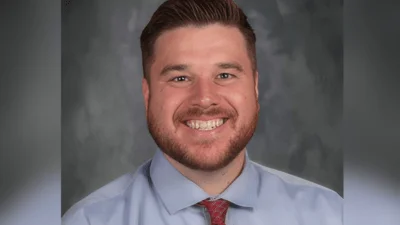National-Louis University issued the following announcement on Oct. 26
Like many people across the nation, Alejos watched news reports about the deaths of innocent Black men and women such as George Floyd and Breonna Taylor erupt into civil unrest and protests against police violence and racial injustice all amidst the backdrop of a global pandemic.
But what Alejos worried most about were her students. An eighth-grade teacher at Gwendolyn Brooks Middle School, Alejos anticipated that first day back when she and her students would reunite while trying to grapple with the world around them. She and her colleagues knew they needed to create room for their young students to express their thoughts and feelings.
“We just personally felt this was our obligation,” said Alejos, who was teaching language arts and literature at Brooks, via Zoom. “We had to talk about these things with our students.”
The question was how?
Alejos said she and other District 97 teachers and administrators came together that summer and drafted a blueprint of what would become the district’s inclusive and anti-racism curricula. Though the district’s educators were already accustomed to that kind of work, they felt that the murders of Floyd, Taylor, Ahmaud Arbery and many others created a sense of urgency to unite staff and students, said Eboney Lofton, chief academic and accountability officer.
What followed next was a series of steps that brought the plan to fruition. The district homed in on the social justice standards, a pillar of guidelines set by the Southern Poverty Law Center’s Learning for Justice program, which focuses on identity, diversity, justice and action, and created a committee to develop lessons and activities around those core values, said Tawanda Lawrence, senior director of curriculum, instruction and assessment.
The district also partnered with its E-Team, a coalition of community leaders, educators, youth advocates and families from Oak Park dedicated to providing resources for students, and other entities, including Dominican University and the Oak Park Public Library. From there, D97 began building the curricula around the “1619 Project,” a podcast from the New York Times that re-examines the legacy of slavery in America, and Stamped: Racism, Antiracism and You, a book by Jason Reynolds and Ibram X. Kendi for readers 12 and up, which details this country’s long racial history.
The district used those stories to anchor discussions on racism at school and at home, said Alejos and Lawrence.
Alejos and Carina Pruitt, curriculum specialist for sixth- and eighth-graders at D97, pointed out that faculty and staff needed to prepare for those conversations. They had to be mindful of their students and families, especially those of color, in order to create a safe space to share or to just be.
“The day of Breonna Taylor’s trial was a super-challenging day for some of our students,” Alejos recalled as an example of how she gave students time to “just pause,” “be quiet and to think about it, and be in our feelings because there are so many feelings with all of this.”
Pruitt said faculty and staff, too, needed levels of support, including training to help carry out the curricula and time to prepare, as well as a place to reflect, rethink and recoup from their work.
“The goal is really to support students, teachers and administrators in those conversations because we do have a complex past and we have a complex present, and we will probably have a complex future,” Pruitt said. “But our futures depend on how we think and talk amongst one another, and that dialogue needs to continue.
“I know sometimes it is tough,” she added, “but the only way we [can] move together is by having those conversations with one another and building that mutual respect and admiration.”
When Alejos thought back to how her students responded to the anti-racism curricula, she spoke of their readiness to engage.
“We found that they [were] more prepared to talk about these challenging topics than most adults are. They are just braver in that way, and they were living this,” she said, noting her students saw the impact of the Black Lives Matter movement and the pandemic unfolding before them. “This was like day-to-day life for them.”
“We were all experiencing it at the same time together, so every student came to the table with something to share about,” she said. “… I think that was very empowering for them — to be like, ‘Someone is going to listen to me right now, and my voice matters in this because this is my life.’”
Kate Walz, whose son attends Percy Julian Middle School, echoed Alejos and spoke about her own experience reading Stamped last year.
Walz, of Oak Park, said her son was a sixth-grader when D97 deployed its anti-racism curricula. They listened to “1619” together, read aloud chapters from Stamped and started having more and more conversations about America’s complicated racial history around the dinner table.
“I will admit as a parent, I probably wasn’t having those conversations early enough,” Walz said. “I was having them more with [my daughter], who’s a teenager, and I really realized my mistake — that you have to talk about this at a very early age, but you have to be very race conscious and have this [be] part of your family discussions.
One thing Walz found helpful was her son’s teacher, Stacey Hill, who often posted open-ended, thoughtful questions, allowing students and families to have “fierce conversations.”
“These conversations around race plague us adults, especially as white adults,” said Walz, who is white. “For [Hill] to think creatively about how to do this under these circumstances so that they could have this type of dialogue for sixth-graders, it just blew me away.”
And that’s something Alejos wanted parents such as Walz and other students to walk away with. “I hope that being able to have these conversations, understanding who they are, that it gives them a sense of confidence that they can handle what’s coming at them. They can have these hard discussions. They can challenge people,” she said. “They can stand up for what they believe in, or they can help others as they grow.”
Original source can be found here.






 Alerts Sign-up
Alerts Sign-up